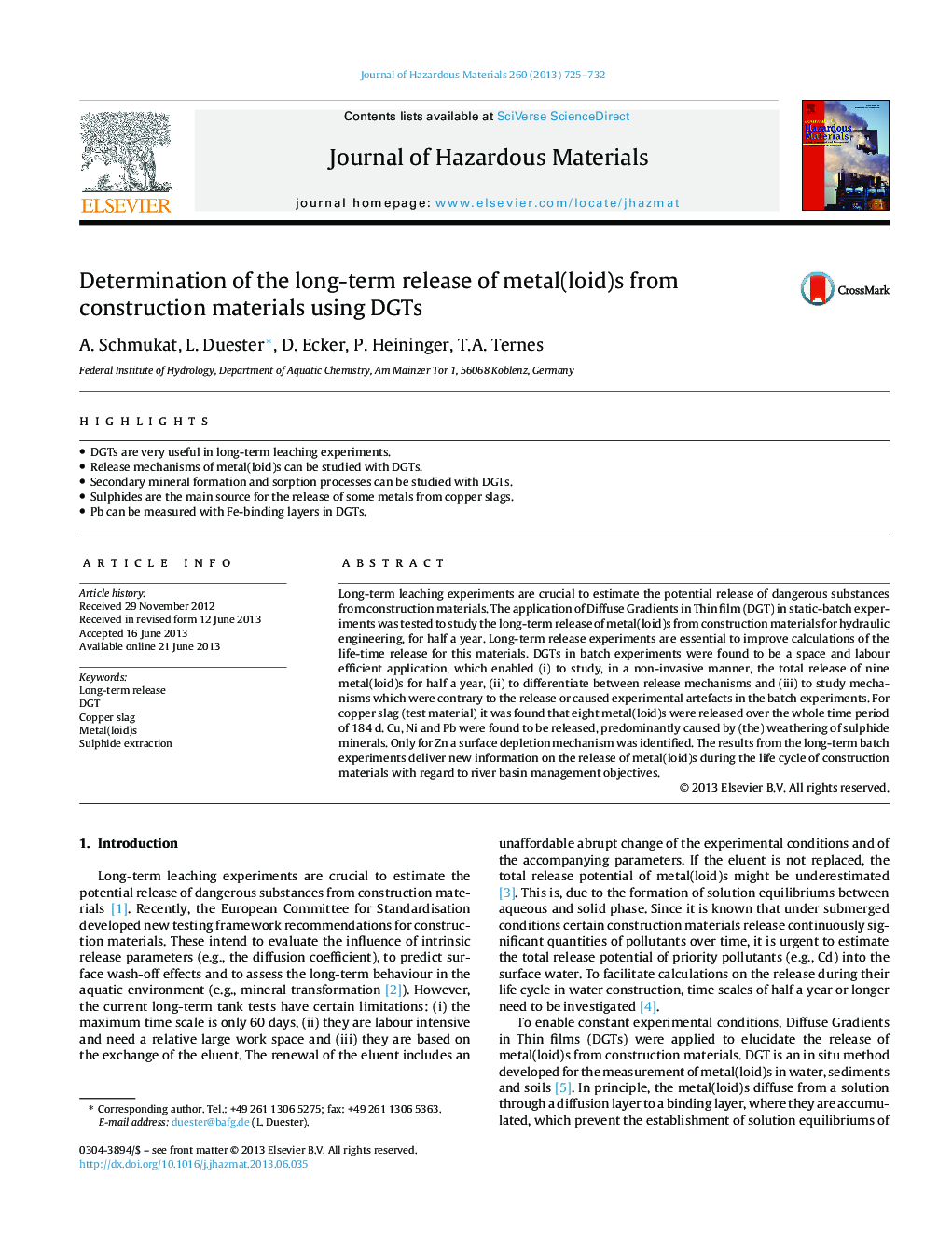| Article ID | Journal | Published Year | Pages | File Type |
|---|---|---|---|---|
| 6972437 | Journal of Hazardous Materials | 2013 | 8 Pages |
Abstract
Long-term leaching experiments are crucial to estimate the potential release of dangerous substances from construction materials. The application of Diffuse Gradients in Thin film (DGT) in static-batch experiments was tested to study the long-term release of metal(loid)s from construction materials for hydraulic engineering, for half a year. Long-term release experiments are essential to improve calculations of the life-time release for this materials. DGTs in batch experiments were found to be a space and labour efficient application, which enabled (i) to study, in a non-invasive manner, the total release of nine metal(loid)s for half a year, (ii) to differentiate between release mechanisms and (iii) to study mechanisms which were contrary to the release or caused experimental artefacts in the batch experiments. For copper slag (test material) it was found that eight metal(loid)s were released over the whole time period of 184 d. Cu, Ni and Pb were found to be released, predominantly caused by (the) weathering of sulphide minerals. Only for Zn a surface depletion mechanism was identified. The results from the long-term batch experiments deliver new information on the release of metal(loid)s during the life cycle of construction materials with regard to river basin management objectives.
Related Topics
Physical Sciences and Engineering
Chemical Engineering
Chemical Health and Safety
Authors
A. Schmukat, L. Duester, D. Ecker, P. Heininger, T.A. Ternes,
